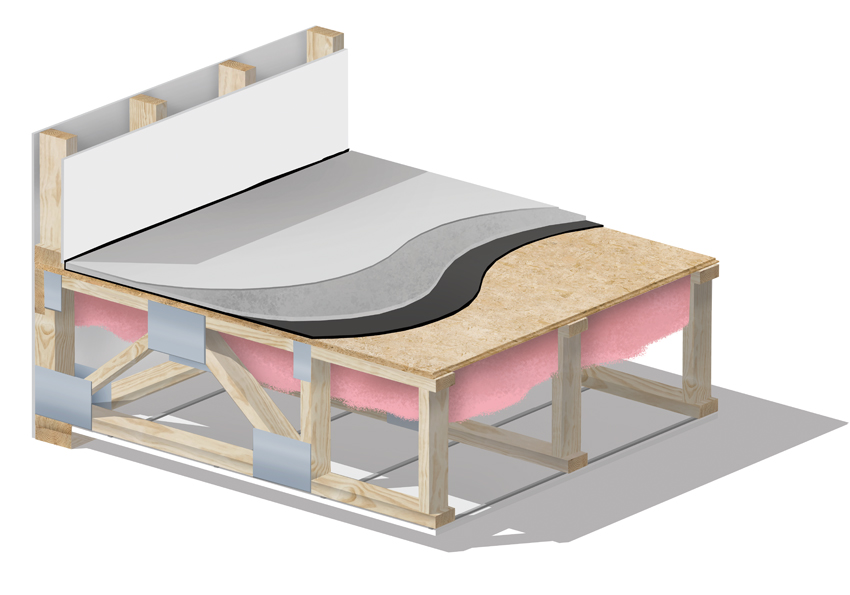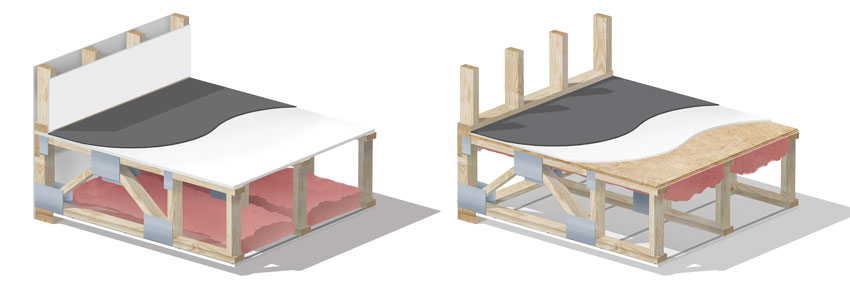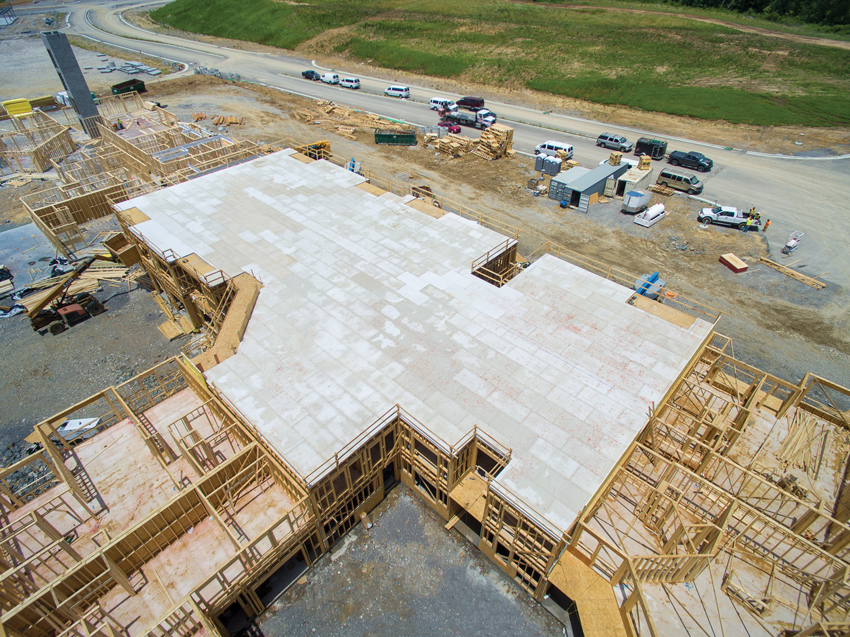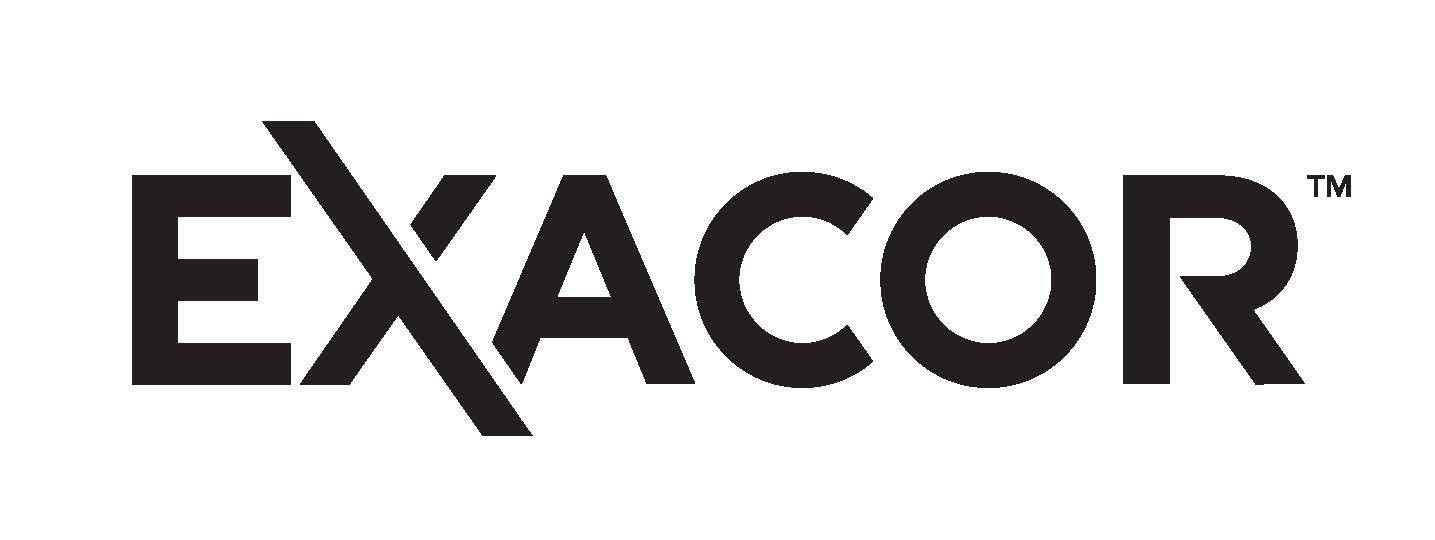Magnesium Oxide (MgO) Floor and Wall Panels for Multifamily Buildings
Comparison of MgO Panels with Wet-Laid Gypsum Underlayment
Based on all the foregoing discussion, the design and construction of multifamily projects requires that some decisions are made on how to achieve the code minimum or preferred levels of fire-resistance and acoustical performance in wall and floor/ceiling assemblies. Those decisions ultimately come down to selecting the right mix of products and materials to meet the criteria and there are, as already noted, many variations and choices. The role of the architect is to assess those choices not only for achieving the desired results, but also in terms of determining their impact on the construction process and overall cost of a project. In this light, we look at a comparison of two common floor/ceiling assemblies: wet laid gypsum underlayment and MgO panels.
Wet-Laid Gypsum Underlayment
Gypsum underlayments are used in both new and existing construction as a means to provide a level subfloor ready to receive a finished floor system. They are often described as “self-leveling” by virtue of the fact that they are poured as a wet mixture that settles down to a level condition.
Self-leveling underlayment products are generally an aqueous mixture of gypsum or hydraulic cements (i.e., cured with water), fillers, polymeric binders and additives. The type and amount of these ingredients as well as the amount of water in the binder are used to control the key properties such as flow, setting behavior, and compressive strength. The dry product is usually mixed with water on-site and applied to a subfloor to achieve a smooth surface. There are a range of self-leveling underlayment products which come with a wide variety of performance attributes to suit different job site requirements including the ability to enhance fire resistance and help increase STC/IIC ratings. Hence, they are sometimes considered as an option for multifamily construction.

Wet-laid gypsum underlayment has the potential to introduce excess moisture into wood-frame structures and cause cycle time delays.
There are, however, some impacts on the construction process by using self-leveling underlayment. The most notable is the “wet-laid” installation, which necessarily introduces excess moisture into wood-framed structures. If that moisture is not properly controlled or dealt with, it can end up trapped inside wood-framed construction and cause deformation, deterioration, or mold growth.
The other notable impact on construction is the time schedule. An additional specialty subcontractor/crew is needed to install the wet-laid underlayment and they need to work through the different areas of the building to apply the material. This typically occurs after all framing is complete and the building is dried in from exterior weather. This means the underlayment does not continue under framed partitions, so fire and acoustical resistance/performance could be lessened in those locations. Further, if a partition ever needs to be moved, there is the issue of filling in the gap to be level with the rest of the underlayment.
More significantly, wet underlayment products typically need five to seven days under ideal conditions for curing, meaning no work can be performed on the floor during that time. This is exacerbated by unfavorable conditions of heat, high humidity, or cold temperatures that can cause longer delays and, perhaps, added expense to keep the temperature within the optimum curing range.
MgO Panels as Underlayment
MgO panels as described already are very well suited as an alternative to wet-laid underlayments. The MgO panels are installed in a “dry” manner, meaning no water is involved and no curing is required. That eliminates exposing wood framing to excess moisture. It also simplifies the construction process by eliminating the need to control the conditions for curing. Without any need for curing, there are also no time delays in the project while the curing takes place.
The installation of MgO panels can also streamline construction. Since it installs like typical wood subfloor products with common wood working tools and fasteners, framers who are already on-site can install it readily—thus eliminating the need for an extra specialty subcontractor or crew. This also means that the MgO underlayment can be installed before the framing of the walls and partitions to create a continuous layer that does not compromise acoustical or fire-resistance performance. Variations might include a wood structural panel and MgO underlayment producing a two-layer acoustical assembly. Or, a single layer of structural MgO may be part of an assembly plus an acoustical sound mat where needed. Details and variations can be reviewed and worked out with manufacturers during design to ensure the best performance while keeping the construction process flowing.

By using MgO subfloor panels, introducing excess moisture is avoided, and potential savings on cycle time are possible as well.
Ben Richardson is the MgO technology manager at Huber Engineered Woods and has direct experience in working with design and construction professionals. He points out, “When it comes to managing timelines for multifamily and light-commercial construction jobs, every hour counts.” His advice is, “To contribute to cycle-time savings and help save headaches associated with managing multiple trades on-site, consider using MgO panels. They can be installed similarly to traditional wood structural panels, which means traditional framing crews can manage the work. Plus, MgO does not require cure-time like wet-laid gypsum underlayment, potentially shaving weeks of time off a job.”
Conclusion
Based on the aforementioned information, design professionals should consider the following when designing multifamily buildings:
- MgO panels have been shown to be a desirable and effective alternative to conventional wood-based panel products.
- Using materials that allow for optimum time savings without sacrificing required sound or fire-resistance performance for subfloor assemblies is possible with MgO panels.
- Choose materials that eliminate the need for products that introduce high amounts of moisture into a wood-framed structure during the build cycle (e.g., wet-laid gypsum underlayment)
- Remember that not all magnesium oxide panels are the same. High-quality magnesium oxide panels use an engineered formulation of MgO and include an integrated mesh core for added structural performance.

Shown is an aerial view of magnesium oxide (MgO) subfloor panels being used across the entire floor as part of a multifamily construction project.
Peter J. Arsenault, FAIA, NCARB, LEED-AP is a nationally known architect, continuing education presenter, and prolific author advancing building performance through better design. www.pjaarch.com, www.linkedin.com/in/pjaarch
 |
Made of magnesium oxide (MgO) and an integrated mesh core, EXACOR™ panels are non-combustible and structural, making them a streamlined single-layer solution for a smooth, structural base for floor coverings that can eliminate the need for wet-laid gypsum underlayment. exacor.com |








